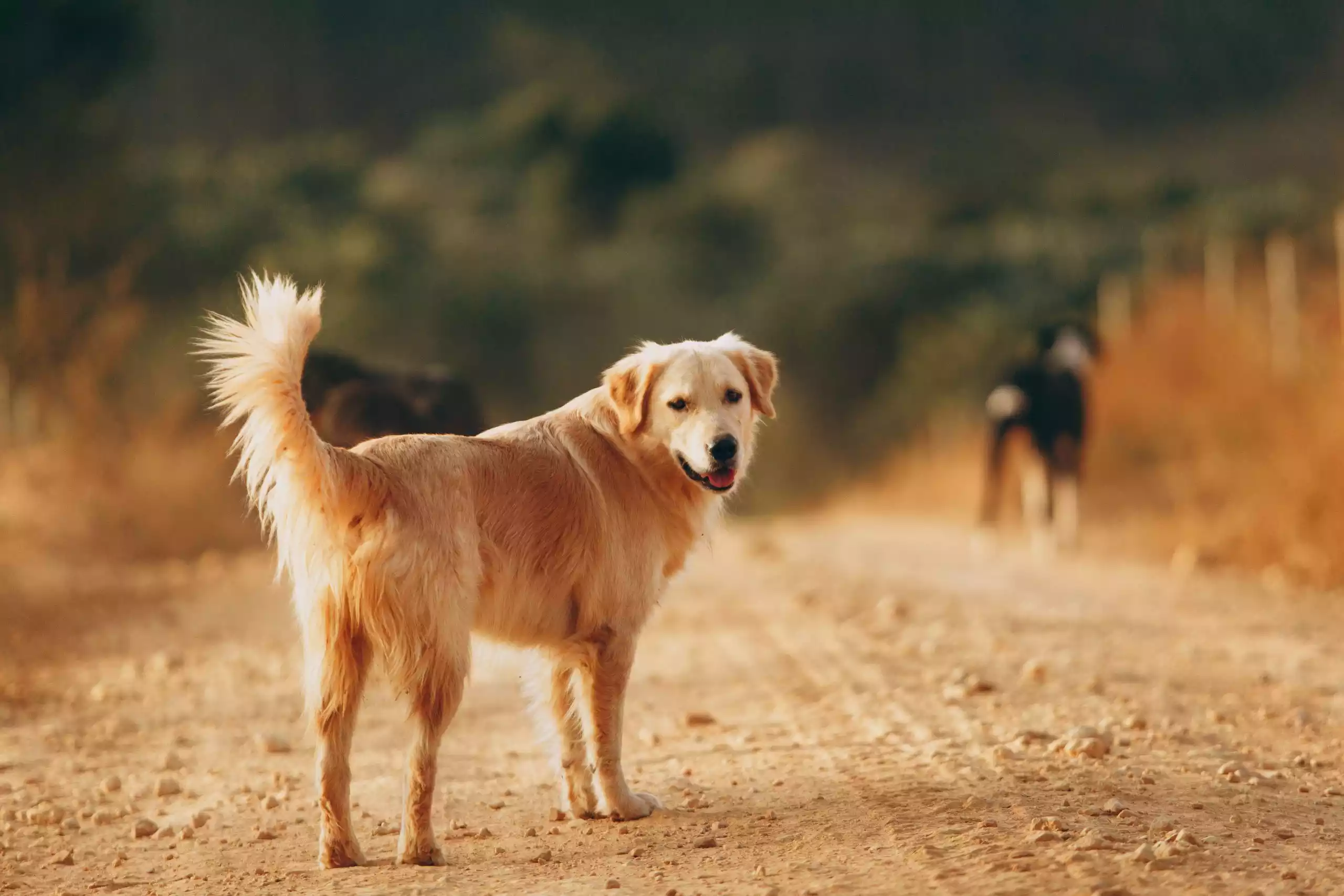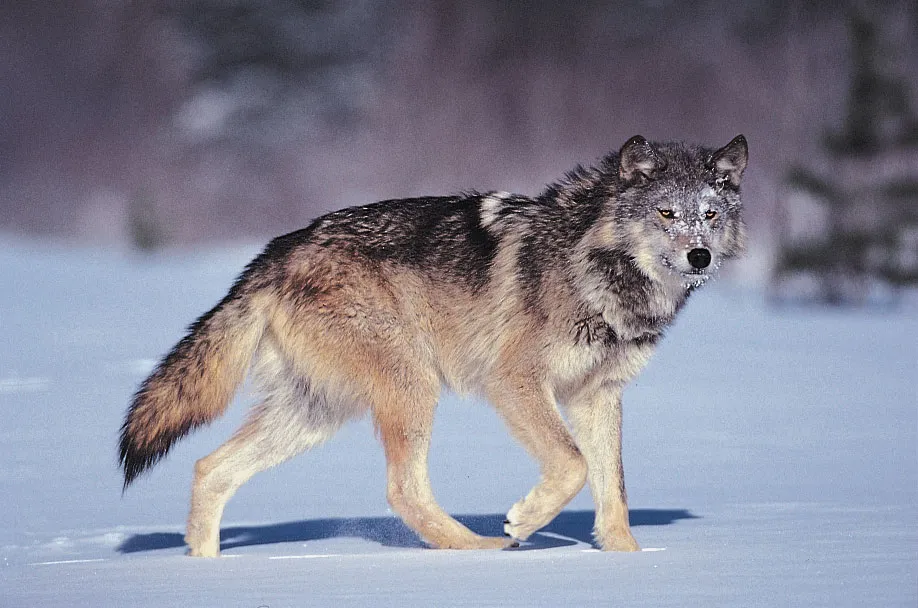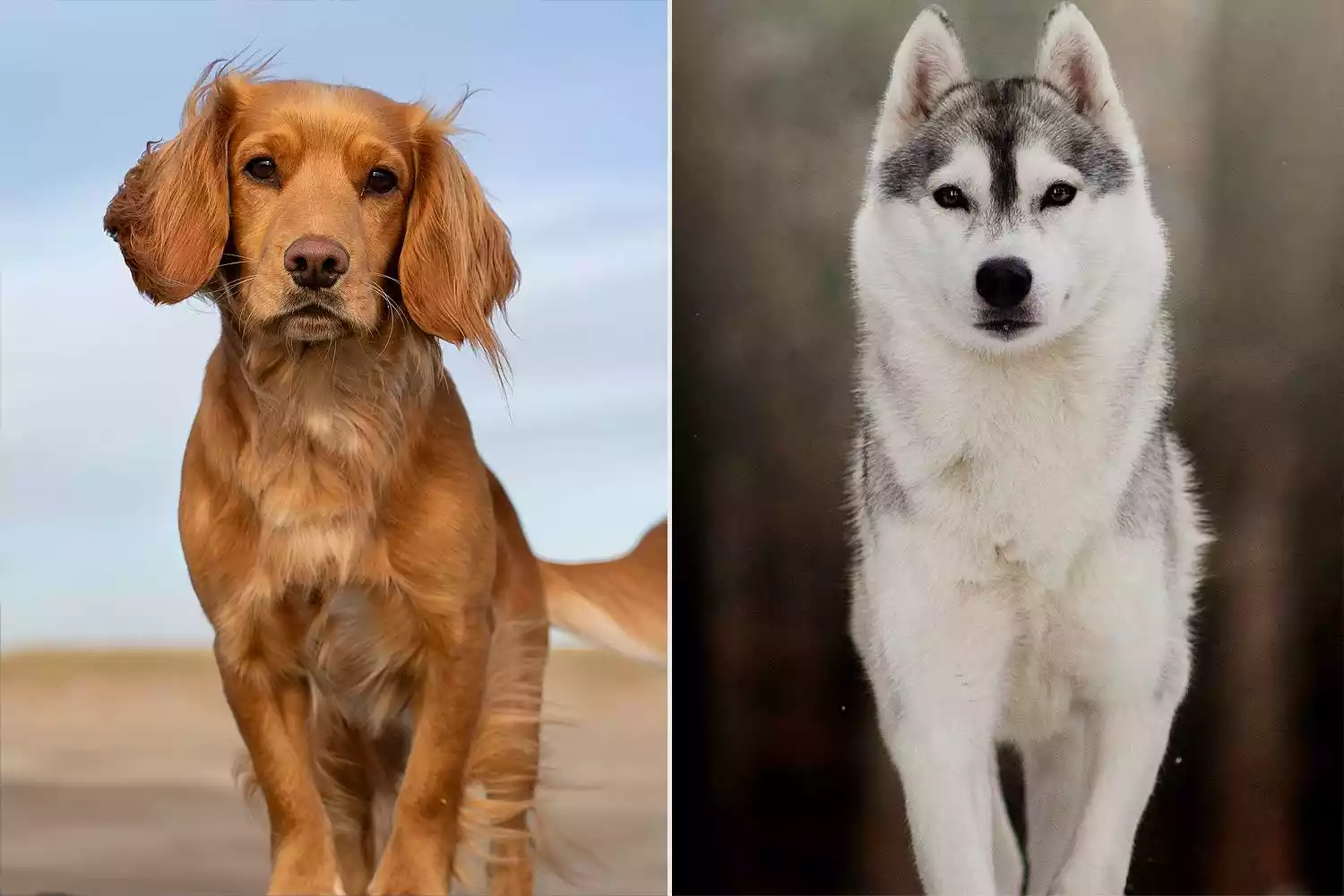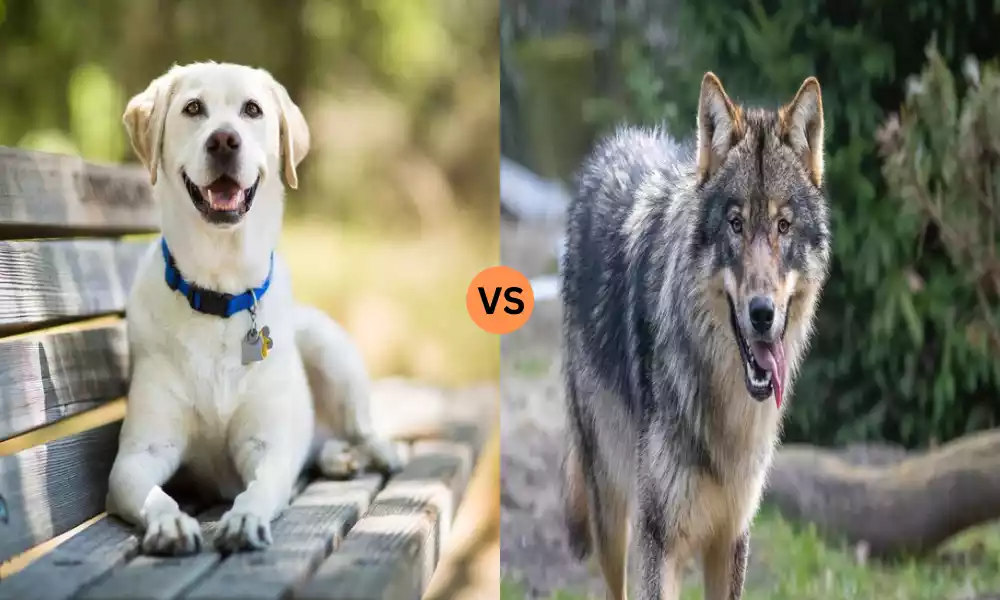Dogs and wolves share a common ancestry but have evolved distinctly over thousands of years. Dogs (Canis lupus familiaris) are domesticated mammals bred for various purposes, including companionship, work, and security.
They are known for their loyalty, trainability, and diverse range of breeds, each with unique physical and behavioral traits. Wolves (Canis lupus), on the other hand, are wild animals and are typically larger and more robust than most dogs.
They are known for their strong social structures, often living and hunting in packs. Wolves are highly adapted to survival in the wild, with acute senses and a diet primarily consisting of large mammals. The key differences between dogs and wolves lie in their behavior, physical characteristics, and the relationships they have with humans.
What is a Dog?
A dog, scientifically known as Canis lupus familiaris, is a domesticated mammal and a subspecies of the gray wolf. Dogs are one of the most common and beloved pets worldwide, known for their loyalty, companionship, and ability to be trained for various tasks. They have been living and working alongside humans for thousands of years, serving roles such as hunting, herding, guarding, and assisting people with disabilities.

Dogs are characterized by their diverse range of breeds, sizes, and shapes, which is a result of centuries of selective breeding by humans. They typically have a keen sense of smell and hearing, which makes them useful in various roles like police work and search-and-rescue operations. Dogs communicate through a combination of vocalizations, body language, and facial expressions.
As social animals, dogs often form strong bonds with humans and other dogs. They are known for their playfulness, loyalty, and affection towards their owners, making them integral members of many families. Proper care for a dog includes providing a balanced diet, regular veterinary check-ups, exercise, training, and social interaction.
What is a Wolf?
A wolf, scientifically known as Canis lupus, is a large, wild carnivorous mammal and a member of the Canidae family, which also includes dogs, foxes, and other similar animals. Wolves are known for their distinctive social structure and behavior, often living and hunting in packs.

Wolves are typically larger and more powerful than most domestic dogs, with sharp teeth, strong jaws, and a keen sense of smell. They are adapted to a wide range of habitats, including forests, tundras, deserts, and grasslands. Their fur, which can vary in color from white to black, with shades of gray and brown, provides camouflage and protection in their natural environments.
The pack, led by an alpha male and female, is the central social unit of the wolf population. These packs work together in hunting, raising their young, and defending their territory. Wolves communicate through a combination of vocalizations, such as howls, growls, and whimpers, as well as body language and scent marking.
Wolves primarily feed on large ungulates (hoofed mammals) like deer, elk, and moose, but their diet can also include smaller animals, carrion, and occasionally fruits and vegetables. They play a crucial role in their ecosystems as apex predators, helping to control the populations of other animals and maintain ecological balance.
Due to their predation on livestock and competition with humans for game animals, wolves have historically been persecuted in many parts of the world. This has led to a significant decline in their populations and range. Conservation efforts in recent years have focused on protecting wolf habitats and managing their populations to prevent extinction.
Comparison table of Dog vs Wolf
Here’s a comparison table highlighting the key differences between dogs (Canis lupus familiaris) and wolves (Canis lupus):
| Aspect | Dog (Canis lupus familiaris) | Wolf (Canis lupus) |
|---|---|---|
| Domestication | Domesticated; have been bred by humans for thousands of years. | Wild animals, not domesticated. |
| Size | Varies widely due to selective breeding (small to large). | Generally larger and more robust than most domestic dogs. |
| Physical Traits | Diverse in size, shape, fur color, and ear/tail shape. | Larger teeth, stronger jaws, longer legs, thicker fur. |
| Behavior | More sociable with humans, trainable, diverse temperaments. | Strong pack instincts, more cautious around humans. |
| Diet | Primarily fed by humans, diet varies by breed and health needs. | Carnivorous, hunting large animals, some scavenging. |
| Vocalizations | Barking, whining, growling, etc., with various meanings. | Howling, growling, and other vocalizations for communication in packs. |
| Role in Ecosystem | Mostly reliant on humans, roles vary from companionship to work. | Apex predators are crucial for ecological balance. |
| Lifespan | Generally, 10-13 years, varying with breed and size. | Wild: 6-8 years; in captivity: up to 15 years. |
| Social Structure | Can be independent or part of a human family/group. | Live and hunt in packs, with complex social hierarchies. |
This table outlines the general characteristics of dogs and wolves, though there can be exceptions and variations within each species.
Importance of understanding their differences
Understanding the differences between dogs and wolves is important for several reasons:
- Conservation and Wildlife Management: Recognizing the distinct behaviors and ecological roles of wolves helps in their conservation and in managing their interactions with human environments. Wolves are often misunderstood and have been persecuted due to their predatory nature. Educating people about their crucial role in ecosystems can aid in their protection and the maintenance of biodiversity.
- Domestic Animal Management: Understanding that dogs have been selectively bred for specific traits, including temperament and behavior, assists in responsible pet ownership and breeding practices. It also helps in selecting the right breed for specific purposes like companionship, service, or work.
- Behavioral Expectations and Training: Dogs, due to their domestication, have different social and training needs compared to wolves. Understanding these needs is crucial for ensuring the well-being of pet dogs, including proper socialization, training, and care.
- Safety and Human-Wildlife Interaction: Knowing the differences between these animals can be vital for safety in areas where wolves are present. Wolves are wild animals and should not be approached or treated like domestic dogs.
- Scientific Understanding: Studying the differences between dogs and wolves contributes to our understanding of animal behavior, genetics, and evolution. It sheds light on how domestication alters species over time and helps in studying the genetic and environmental factors that influence behavior and physical traits.
- Ethical Considerations: Recognizing that dogs and wolves have different needs and instincts is important for ethical treatment. Wolves, being wild animals, have specific environmental and social requirements that are different from those of domestic dogs.
- Cultural and Historical Significance: Understanding the role of dogs and wolves in human history and culture can enhance our appreciation of these animals. While dogs have been companions and workers alongside humans for millennia, wolves have often been featured in mythology and folklore, symbolizing various aspects of human society.
Recognizing and respecting the differences between dogs and wolves is key to ensuring the appropriate treatment, conservation, and coexistence of these closely related yet distinct species.
Physical Characteristics
The physical characteristics of dogs and wolves differ in several ways due to their distinct evolutionary paths. Here’s a comparison of their physical traits:
Dogs (Canis lupus familiaris)
- Size and Build: Dogs come in a wide range of sizes and builds, from tiny Chihuahuas to large Great Danes. This variation is a result of selective breeding by humans.
- Coat: Dog coats vary greatly in color, length, and texture, depending on the breed. Some have long, silky fur, while others have short, coarse hair.
- Ears and Tail: Dogs have diverse ear and tail shapes, ranging from erect and pointed to floppy or curled.
- Facial Features: Dogs may have a variety of facial shapes, from the flat faces of bulldogs to the elongated snouts of greyhounds.
- Teeth and Jaw: Generally, dogs have less powerful jaws compared to wolves. Their teeth are also smaller.
- Paws: Dog paws are generally smaller and less robust than those of wolves, adapted more for domestic environments than for the rigors of the wild.
Wolves (Canis lupus)
- Size and Build: Wolves are generally larger and more robust with longer legs and bigger paws, adapted for long-distance travel and hunting.
- Coat: The wolf’s coat is typically thicker and coarser, designed for insulation against cold weather. Their fur color ranges from white to black, with shades of gray and brown.
- Ears and Tail: Wolves have straight, pointed ears and bushy tails. Their ears are often smaller in proportion to their head, compared to many dog breeds.
- Facial Features: Wolves have a uniform facial structure with a powerful, elongated snout and a wide forehead.
- Teeth and Jaw: Wolves have larger, stronger jaws with bigger and sharper teeth, suitable for hunting and consuming prey.
- Paws: Wolf paws are larger and more powerful, designed for efficient travel in a variety of terrains, including snow.
These physical characteristics reflect the different lifestyles and environments of dogs and wolves. Dogs have evolved through selective breeding to fulfill various roles alongside humans, while wolves have adapted to survive in the wild.
Behavioral Traits
The behavioral traits of dogs and wolves are distinct, largely due to the effects of domestication on dogs and the wild nature of wolves.
Dogs (Canis lupus familiaris)
- Sociability: Dogs are generally more sociable towards humans, having been bred for companionship and various roles in human society.
- Trainability: They are more trainable, responsive to human cues, and eager to please, making them suitable for a variety of tasks, from companionship to specialized work like search and rescue.
- Communication: Dogs have developed ways to communicate effectively with humans, using a range of vocalizations and body language.
- Dependency: Domesticated dogs rely on humans for food, shelter, and care, showing a level of dependency not found in wolves.
- Aggression: While dogs can display aggression, selective breeding has generally favored traits that reduce wild predatory instincts.
Wolves (Canis lupus)
- Pack Mentality: Wolves exhibit a strong pack mentality, with a complex social structure and cooperative behaviors, essential for hunting and survival.
- Survival Skills: They possess acute survival skills, including hunting, territory defense, and pack hierarchy navigation.
- Independence: Wolves are more independent and self-sufficient compared to dogs, having evolved to survive in the wild without human assistance.
- Communication: Their communication is geared towards pack life, using howls, body language, and scent marking to coordinate with pack members.
- Cautiousness Around Humans: Generally, wolves are cautious or even fearful of humans, avoiding contact unless threatened.
Comparative Analysis
- Domestication vs. Wild Instincts: Dogs’ behaviors have been shaped by domestication, making them more adaptable to living with humans, whereas wolves have retained their wild instincts.
- Adaptability: Dogs have adapted to a wide range of human environments, from living in homes to working in various professional capacities. In contrast, wolves have adapted to survive in a range of natural environments.
- Social Structures: The social structures of dogs can vary greatly, from living as solitary pets to being part of a human family or working in teams. Wolves, however, consistently follow the pack structure with defined roles and hierarchies.
These behavioral traits reflect the differing needs and environments of dogs and wolves, highlighting the profound impact of domestication on dogs in contrast to the wild nature of wolves.
Domestication and Wild Nature
The concepts of domestication and wild nature are crucial in understanding the fundamental differences between dogs and wolves.
Domestication of Dogs
- Process: Dogs were the first species to be domesticated by humans, a process that began thousands of years ago. This domestication involved selective breeding for specific traits that humans found desirable or useful, such as temperament, size, and hunting or herding abilities.
- Behavioral Traits: Domesticated dogs generally exhibit a greater tolerance and affection towards humans. They have been bred to be more sociable, trainable, and dependent on human companionship and care.
- Dependency: Dogs rely on humans for food, shelter, and healthcare. This dependency has led to a co-evolution where dogs have developed the ability to understand and communicate with humans effectively.
- Variability: Domestication has led to a wide variety of dog breeds, each with specific physical and behavioral traits suited to different tasks and environments.
Wild Nature of Wolves
- Independence: Wolves are wild animals and have not undergone the process of domestication. They are self-reliant, hunting and surviving in the wild without human intervention.
- Social Structure: Wolves live in packs with a complex social structure. This pack mentality involves cooperative hunting, territorial behavior, and a hierarchical order typically led by an alpha male and female.
- Instincts and Survival Skills: Wolves possess strong instincts for hunting and survival in the wild. They are adept at tracking, hunting, and killing prey, and they have a keen sense of territory and pack dynamics.
- Human Interaction: Wolves are generally cautious and even fearful of humans. They have not been bred to interact with humans and often avoid contact unless their natural habitat is encroached upon.
Impact of Domestication and Wild Nature
- Genetics and Behavior: Domestication has significantly altered the genetic makeup and behavior of dogs compared to their wolf ancestors. While dogs have evolved to be more adaptable to human environments and societies, wolves have retained their instincts and behaviors necessary for survival in the wild.
- Conservation and Management: Understanding the wild nature of wolves is essential for their conservation and management, as they play a vital role in maintaining ecological balance. Conversely, understanding the domestication of dogs is crucial for responsible pet ownership and breeding practices.
The domestication of dogs has led to a species that is generally sociable, trainable, and deeply integrated into human society, whereas wolves, with their wild nature, have retained their instincts and behaviors necessary for survival in their natural habitats.
Similarities Between Dog vs Wolf

Despite their differences, dogs (Canis lupus familiaris) and wolves (Canis lupus) share several similarities, largely due to their common ancestry:
- Genetic Makeup: Dogs and wolves share a significant portion of their DNA. Scientifically, dogs are considered a subspecies of wolves.
- Social Behavior: Both are inherently social creatures. Dogs are known for their sociability with humans and other dogs, while wolves exhibit complex social behavior within their packs.
- Communication: Both use body language, vocalizations, and facial expressions for communication. Tail wagging, growling, and various vocal sounds are common in both species.
- Territorial Nature: Both dogs and wolves can be territorial. Wolves mark and defend their territory in the wild, while dogs may exhibit territorial behaviors in domestic settings.
- Parental Care: Both species demonstrate strong parental instincts, with parents caring for and protecting their offspring.
- Pack Mentality (in some dog breeds): Certain dog breeds, especially those closer to their wolf ancestors, exhibit a pack mentality similar to wolves, with a social hierarchy and cooperative interactions.
- Predatory Instincts: Both have inherent predatory instincts. In wolves, this is essential for survival, while in dogs, it’s often seen in behaviors like chasing.
- Dietary Preferences: Both are carnivorous, with a natural preference for meat. While dogs have adapted to a more varied diet due to domestication, their digestive system is quite similar to that of wolves.
- Reproductive Behavior: The reproductive behavior of dogs and wolves is similar in terms of mating rituals, gestation period, and litter size.
- Basic Physical Features: Despite the variation in size and shape among dog breeds, their fundamental physical structure – four paws, similar dental structures, and a comparable sense of smell and hearing – remains similar to that of wolves.
These similarities underscore the shared lineage of dogs and wolves, reminding us that despite the extensive domestication and breeding that have diversified dogs, they still retain many characteristics of their wild ancestors.
Final Opinion
Dogs and wolves, while sharing a common ancestry, exhibit significant differences due to dogs’ domestication and wolves’ wild nature. Dogs have been bred for diverse traits, resulting in a variety of breeds with distinct sizes, appearances, and temperaments, and they have developed a close, dependent relationship with humans. Wolves, in contrast, remain wild, self-reliant creatures with strong pack instincts and a crucial role in their natural ecosystems.

